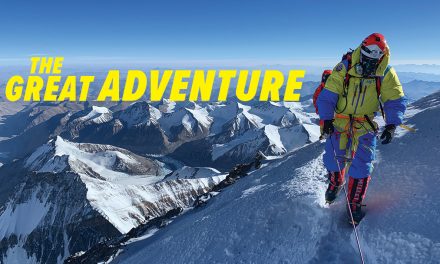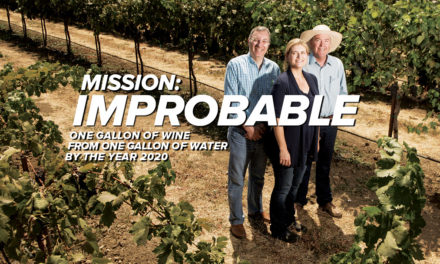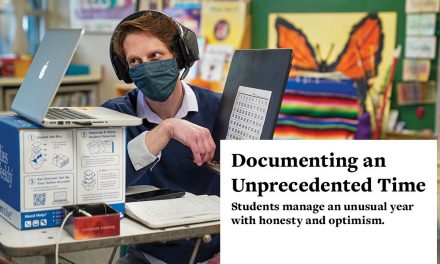Citizen Science
Scientific research can feel impenetrable and exclusive
to many people. These six community science projects at UC Davis are changing that.

MPA Watch asks volunteers to observe beaches along the California coast.
Photo: Courtesy
For many, the term “scientist” brings up images of people clad in white lab coats clutching glass tubes, gathering data that will appear in dense academic articles that most people can’t parse, let alone even access because the information is often behind paywalls. Often, these scientific findings don’t resonate with the everyday lives of the public. That’s why UC Davis researchers are leading several citizen and community science projects, which can help make research more meaningful and inclusive.
Citizen and community science projects can take various forms, but at their core they involve people who are not professional scientists. “This is about involving someone in a scientific process where they play an important role in helping that process succeed, whether it’s collecting data, or shaping research questions, or helping with the analysis,” explained Ryan Meyer, the executive director of the Center for Community and Citizen Science at the UC Davis School of Education. Citizen science is about “expanding our notion of who can be a scientist,” he added.
Arguably, community and citizen science have been around longer than professional science, Meyer said. Before universities became the research powerhouses of today, much of science was done by people who were technically amateurs with the time and resources to pursue their questions.
Increasing participation in science has many benefits. For one, more participation can lead to more data. Community scientists can crowdsource data, expanding what professional researchers could accomplish on their own. The long-running Christmas bird count, organized by the National Audubon Society, is an example; since 1901, volunteers have observed birds during the winter holiday season, providing valuable data on the health and distribution of bird species across North America. During the 2021-22 season, 76,880 people officially participated in the bird-watching project.
But community and citizen science also have value beyond the utility of mass data gathering. This can be a vital way to foster education and interest in science by making it more salient in everyday life. Citizen science projects at grade schools, for example, can allow students to develop skills and expertise not possible through more typical classroom learning, according to research by the Center for Community and Citizen Science. These student-led projects also help young people take ownership of their work and see themselves as scientists — an experience that may help propel them into future science careers. “Learning is not just about poking facts into people’s brains,” Meyer said.
Additionally, citizen and community science can support conversations between institutions and the public, including the taxpayers who fund research. Community members can not only partake in data gathering, but help shape research questions, giving them a greater voice in science. “Citizen science is a way to make the institutions of science more accessible and more responsive,” Meyer said.
Here are a few of the ways that UC Davis researchers are involved in community and citizen science.
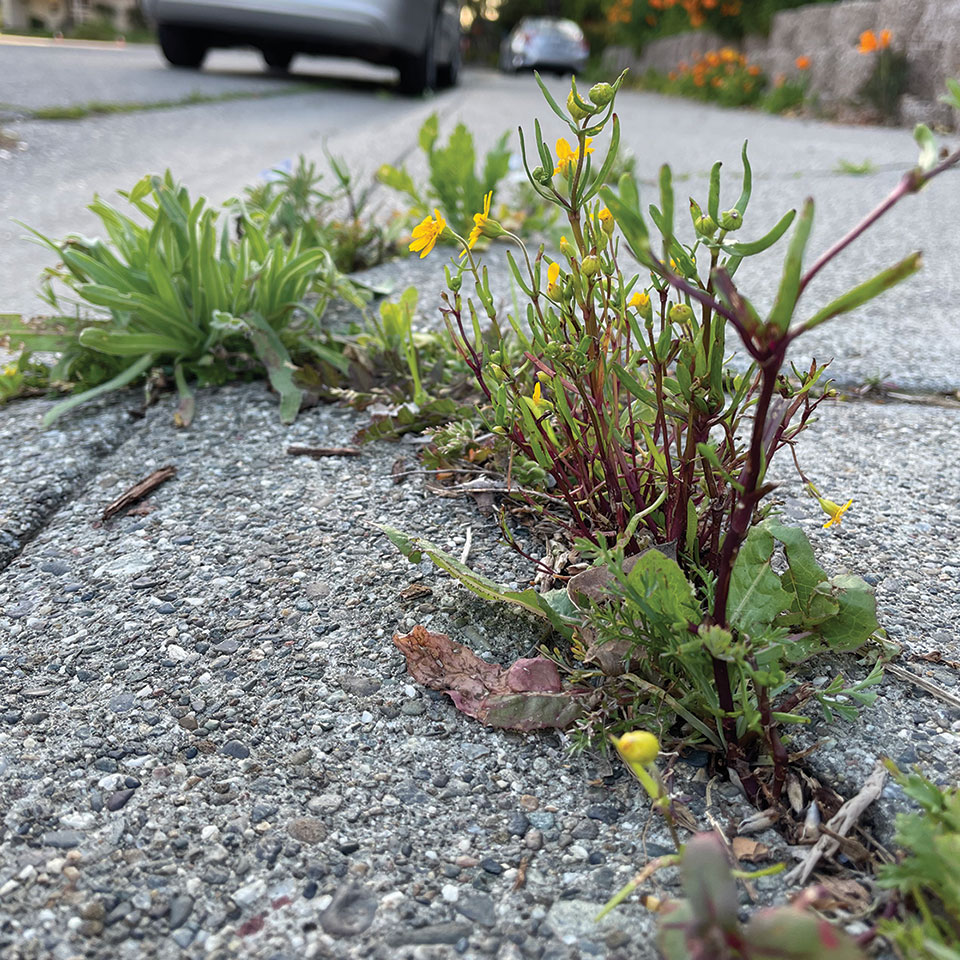
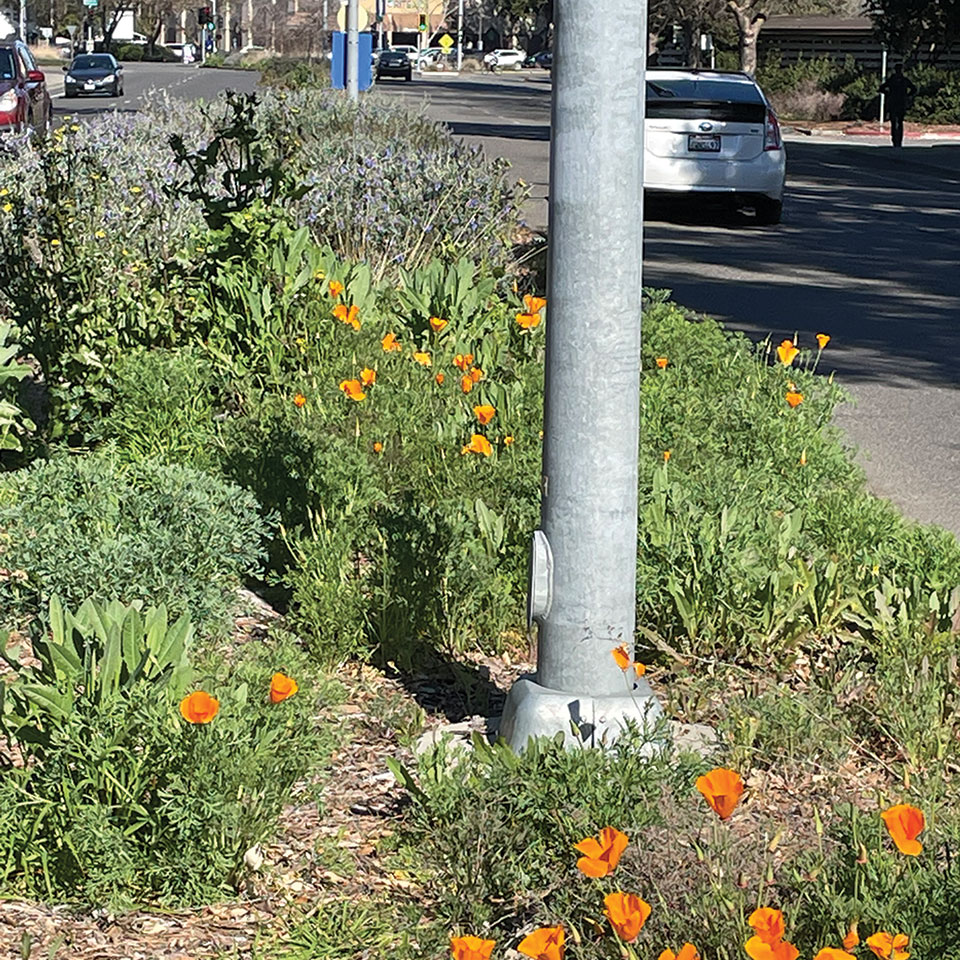
The Seed Pile Project set out to plant wildflowers in urban areas.
Photos: Courtesy
Wildflowers at bus stops
Adding plants to urban environments has many benefits, from reducing the heating effect of pavement to improving mental health. Haven Kiers, a UC Davis professor of human ecology, is particularly interested in bringing native flowering plants to urban spaces, so that they support insects like bees and butterflies. She and Billy Krimmel, Ph.D. ’15, founder of landscape design company Miridae, were curious which California native plants could cope without any help in urban areas — species that could quickly and affordably green up pavement-covered landscapes. The two launched the community science initiative Seed Pile Project to find out.
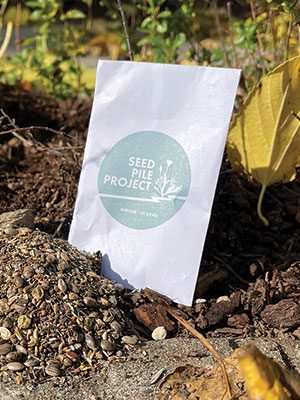
This year, more than 1,000 volunteers got three bags of seeds each, which contained a mix of six wildflower species. They dropped the seeds in high-traffic city spaces, such as road medians and cracks in sidewalks near streets, alleys and bus stops. Once a month, the participants visit the seed pile, take a photo and fill out a survey on how each flower species is doing.
In May, Kiers reported that baby blue eyes, lupine and golden poppies were in full bloom, invigorated by the wet winter. Kiers and Krimmel are also partnering with UC Davis entomologists Emily Meineke and Neal Williams, who will visit the seed pile locations in the summer to see what insects they attract.
With the help of hundreds of volunteers, Kiers said she is excited to determine which native plants can thrive with no added fertilizers or water. “You can add beauty, but you can also add biodiversity into these areas that typically don’t get that, and at the same time educate people about pollinators,” she said

Using the Citizen Science Tahoe app, lake goers can report algae sightings.
Photo: Courtesy
Watching water quality
In recent years, due to factors including pollution and climate warming, Lake Tahoe has had increased surges of slimy, bright green algae, forming gloopy floating mats in places like Marla Bay. Apart from the algae marring the scenic shoreline, it can lead to low-oxygen conditions in the lake, harming fish and other aquatic organisms.
But with Lake Tahoe’s 72 miles of shoreline, it can be problematic for scientists to regularly track the stringy algae of the genus Zygnema. So, researchers at the UC Davis Tahoe Environmental Research Center, together with The League to Save Lake Tahoe and Desert Research Institute, have enlisted the help of Tahoe tourists and residents to report algae and other concerns such as litter, murky water and invasive species.
Using the Citizen Science Tahoe app, lake goers can snap a photo and input their observations of water quality. So far, 6,500 reports have been submitted to the app. It’s already helping scientists track the spread of algae, said Heather Segale, the education and outreach director for the UC Davis Tahoe Environmental Research Center.
Not only is the app a useful tool to monitor lake health, Segale said it can help people understand how the actions of visitors and the lake community impact water quality. For example, over-application of fertilizer can add nutrients to the lake that contribute to algal blooms. “Maybe people will reconsider a big, huge lawn that comes right up to the edge of the water or will reconsider how much fertilizer they put on those big green lawns,” she said. “The more people that understand why these changes are happening, hopefully, that helps with solutions.”
Community wildlife coroners
Fraser Shilling, director of UC Davis’ Road Ecology Center, had suspected that much of the mortality for California wildlife could be attributed to vehicle collisions. But without a central database, estimating the concern and where the most animals were getting hit and killed was difficult. He started the California Roadkill Observation System in 2009 to find out.
Since then, volunteers have entered more than 100,000 observations of roadkill into the system, noting the location and species. Shilling and his team combine the data with reports of animal collisions from the state highway patrol and use the information in reports identifying roadkill hotspots.
The data has helped confirm that collisions are a leading cause of mountain lion mortality in Southern California and suggest that even common species like mule deer are heavily impacted by crashes. Shilling added that in addition to the physical impacts to drivers and animals, people experience moral distress from wildlife collisions.
From an economic standpoint, wildlife collisions from 2016 to 2020 in California cost as much as $2 billion, considering factors such as medical costs and vehicle damages, the 2021 hotspot report estimated. However, using the hotspot reports, officials could identify segments of roads where solutions like fencing would provide the greatest benefit — and pay for themselves in avoided impacts — to people and wildlife.
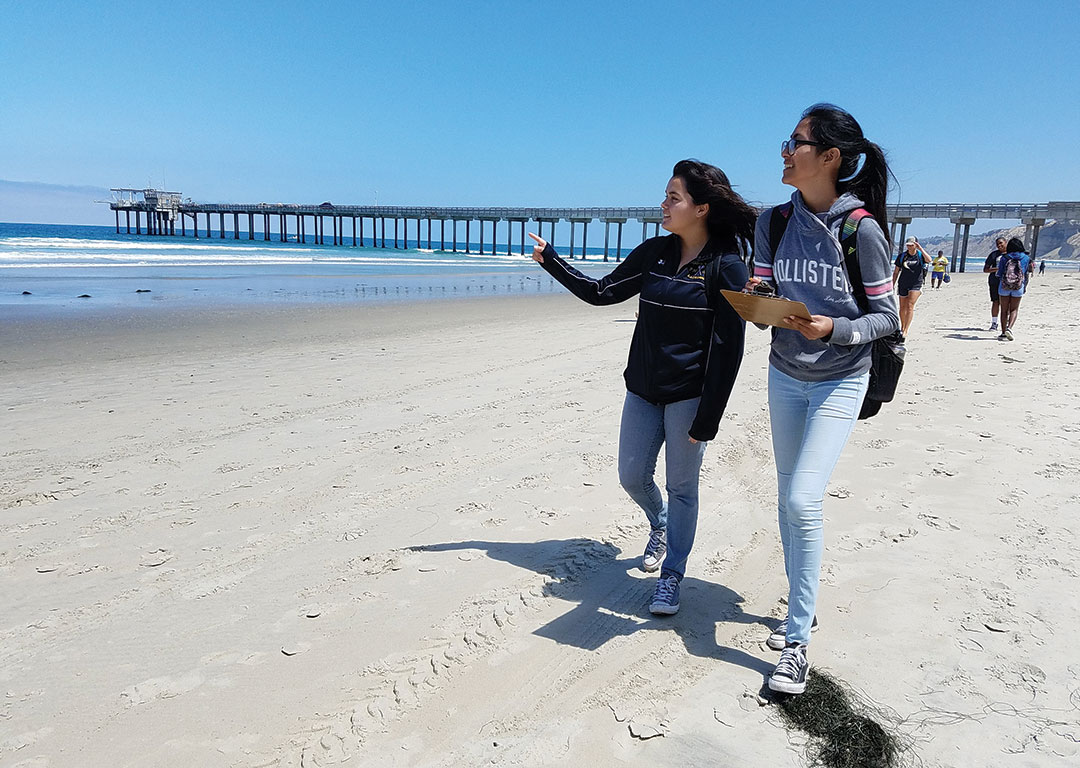
The public can monitor marine protected areas along the California coast.
Photo: Courtesy
Protecting the ocean
In the early 2000s, California established a network of marine protected areas, which conserve ocean and coastal life by limiting human activities such as fishing. These zones are adaptively managed, which means that officials regularly review how the existing protections are meeting conservation goals and may adjust management based on these reviews.
This flexible approach requires lots of monitoring to see how sea life and habitats are faring, and community science initiatives have been key to this monitoring. MPA Watch is one such project; across the coast, volunteers observe beaches, counting the number of people they see and noting what beach goers are up to. UC Davis researchers analyze the data and submit reports to state wildlife officials, helping them understand how the public uses the spaces, as well as keep tabs on any violations such as unpermitted fishing.
Other citizen science projects supporting the MPAs include professional divers observing reefs and kelp forests and grade school students studying tide pool animals like Pacific mole crabs. UC Davis researchers found that, in total, more than 84,000 volunteers have helped monitor MPAs.
Collaborating with fire-impacted communities
In late 2017, Rebecca Schmidt, a UC Davis associate professor of molecular epidemiology, was recruiting pregnant women for an environmental health project. This was not long after the wildfires that charred wine country in Napa and Sonoma counties, and the women asked her if the wildfire smoke could impact their babies. Little research had been done on the pregnancy impacts of wildfire smoke, so Schmidt decided to study it.
For her Bio-Specimen Assessment of Fire Effects (B-SAFE) study, Schmidt recruited women who had been pregnant during major wildfires. The participants filled out surveys on their exposure, and some also provided biological samples like hair and blood. Study staff who collected samples also provided the participants with information on how to reduce their exposure to smoke. Schmidt said the research is so far inconclusive regarding toxic effects from smoke. However, the stress levels reported by the participants may be a cause for concern.
Schmidt is also leading a larger-scale analysis combining California data on birth outcomes and wildfire smoke pollution. For this project, she engaged people from wildfire-impacted communities from the start. To develop her research questions, Schmidt and her team work with a community advisory group. The research team consults with the community group, as well as looks for ways to help people with their smoke concerns, such as by providing instruction for building affordable indoor air filters. “Hopefully, it’s a way to broaden people’s uptake of some of these preventative measures,” Schmidt said.

The Insight Garden Program has brought gardens to several California prisons.
Photo: Courtesy
Monitoring pollinators in prisons
Across several California prisons, the Insight Garden Program nonprofit runs an intensive gardening and landscaping program, providing educational and vocational benefits to incarcerated people. Hoping to further the benefits of prison gardens, they partnered with researchers from UC Davis School of Education to bring in citizen science.
Last year, the team met with people at three prisons and introduced them to pollinator monitoring. The participants observed flowers in the prison gardens, noting all the insects that visited. The observations were added to the Great Sunflower Project, a nationwide effort to catalog pollinators. The incarcerated people were excited to engage in the project and brought many of their own insights and observations into the process, said Meyer, who helps lead the project. They learned which insects benefit garden plants and appreciated the fact that their work — building the garden — attracted the arthropod visitors.
Meyer said the team hopes to secure funding to bring citizen science projects to more prisons. He also expressed interest in connecting scientists and incarcerated people to find new ways to collaborate. For example, people in prisons might be able to help local ornithologists by bird watching, noting which species fly over the area.
Bringing citizen science to prisons provides people with an opportunity to engage in science and gain new skills, Meyer said. “We are generally interested in both realizing and pushing the limits of the notion that citizen science expands who can participate in science,” he said. “And it’s not just about benefiting those audiences, but also science itself becoming more relevant in more places.”

